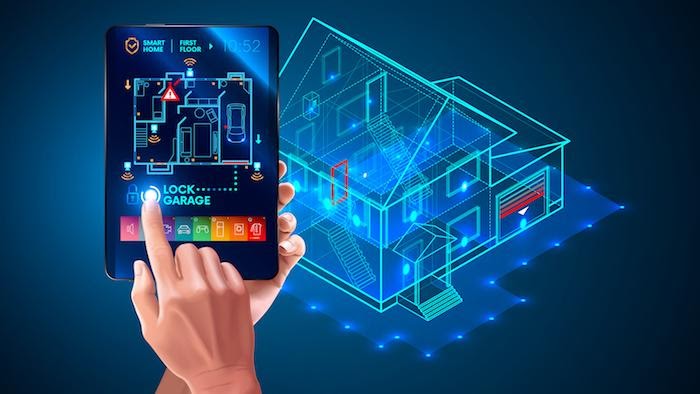The technology of Home automation gives you access to control devices in your home via a mobile device from anywhere in the world.
Home automation covers almost everything such as lights, appliances, heaters, coolers, etc. From the security point of view, you can control home with the touch of a button or voice command, in such a way it takes care of simple tasks, and therefore you can focus on what matters.
The components of the home automation system can be anything that can be connected to a network, can be automated and controlled remotely. The real-life scenario of home automation connects simple “On” and “off” binary devices like lights, electronic locks etc.
An inevitable advantage of home automation is the unmatched potential for energy savings and therefore cost savings.
The smart use of a thermostat (based on a temperature threshold) for heating and cooling system checks is an efficient idea. Mostly, thermostats can be programmed with different temperatures aimed to keep minimum use of energy during the least likely hours. The scheduling can be further broken down into a weekend or season basis in isolated devices like thermostats and sprinklers.
In simple terms, the set up of “coming home” turns on lights, heater or more while you drive home from anywhere; activate all with one tap on your smartphone. Similarly, the “leaving home” can also be set up in order to save energy once you leave home.
The Vivint is one of the top five smart home security systems of 2020, provides ideal security consultation and professional installation which makes your home automated and secure.
The following are a few smart devices that provide, notifications and alerts on your mobile device as well as to the fire departments in case of an emergency.
Smart Smoke Detectors provide alarm notifications to your smartphone. It can be wired with the home security system and can be monitored by a central station to alert you and the fire department. The working of these detectors comes forth in action soon after they sense smoke in the air and thus they shut down the air handling systems to prevent the spread of smoke. The added benefit of integrated cameras and voice command for the directions to be followed while the house is on fire enhances the efficiency of detectors. Smart detectors are also capable of sending alerts to your smartphone in case of a low battery level.
Cooking fire is the major cause of home structure fires. The use of motion-sensing technology automatically shuts off the stove. Once the sensor detects that you’ve left the kitchen, it starts the countdown and eventually shut off the stove. Once you come back to the kitchen, it automatically restarts count down.
In the upcoming future, home automation will be extended to almost all the devices within the home. For now, mostly the facility focuses on aspects that are critical; needs at most care and security.
Information credits: www.safewise.com and www.travelers.com
Image credits: www.myzeo.com














Add Comment